The term ‘embellished’ isn’t really a theoretical one, but it seems an appropriate way to describe these examples. Sometimes an idea for a chord progression can come to us virtually complete; at other times, we have to work a bit harder to refine an idea.
In a recording session, it’s not unusual to be asked if you can add something to a ‘standard’ set of chords and bring something else to the harmony – all within reason, of course.
The theme linking these examples is that (with experimentation) they could all make nice alternative voicings or ‘overlays’ to more conventional chords.
Some of them have a complexity you can normally only achieve in alternative tunings, which is also a wonderful world to explore, but it makes sense to get the most out of regular tuning, too.
There’s also the convenience of not having to retune. All of the examples can be strummed (with some judicious muting of unwanted strings) or fingerpicked. Don’t let the complex-sounding names spoil your enjoyment!
Example 1. Dm/F
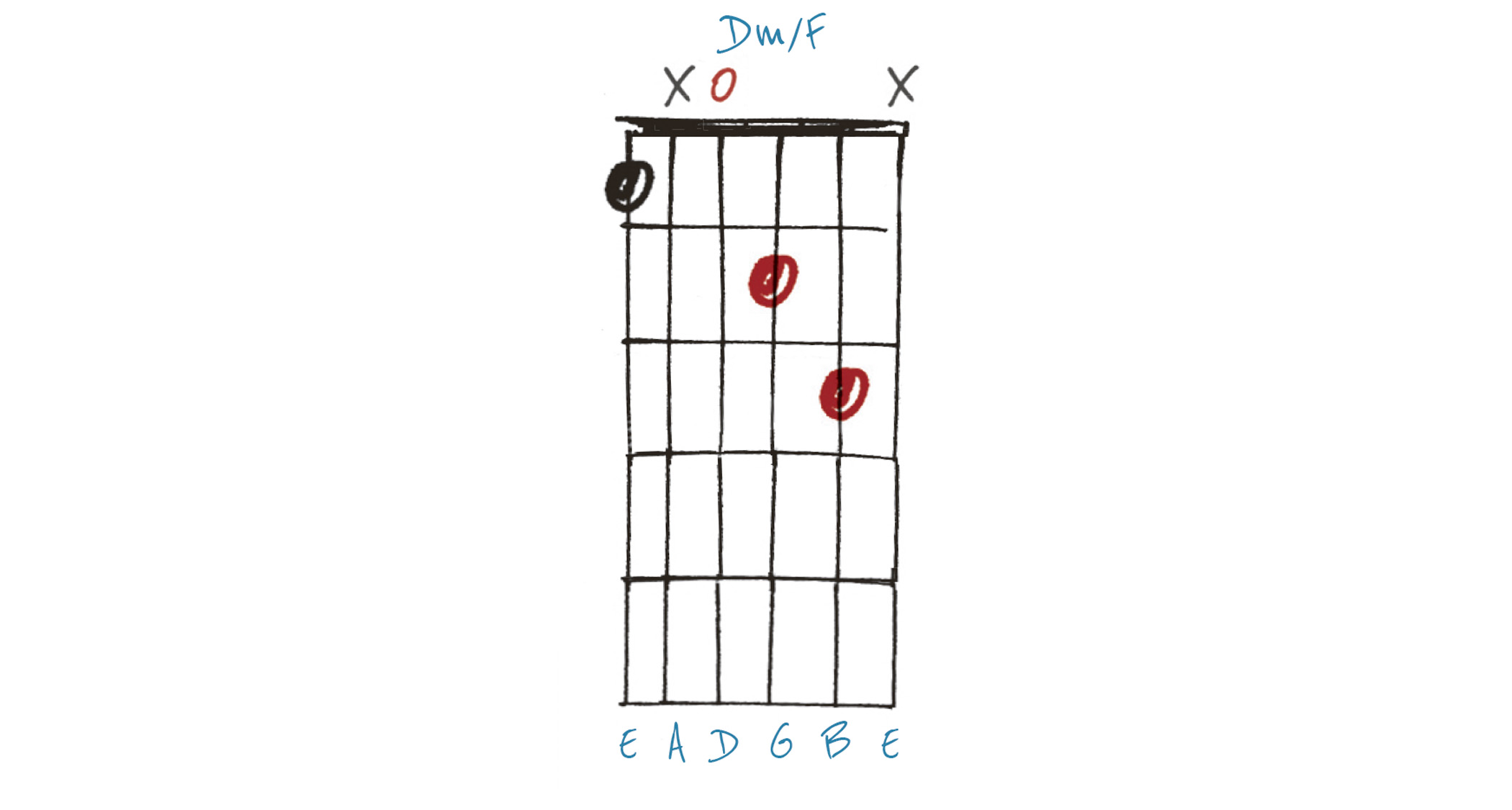
This chord could correctly be called F6 or Dm/F as both share the same notes (F D A D). The naming is a matter of preference and/or context. For example, this may follow a D/F# chord, in which case it could make sense to call this Dm/F. Even then, you wouldn’t be wrong to say F6 if you preferred.
Example 2. Gmaj9(no 3rd)
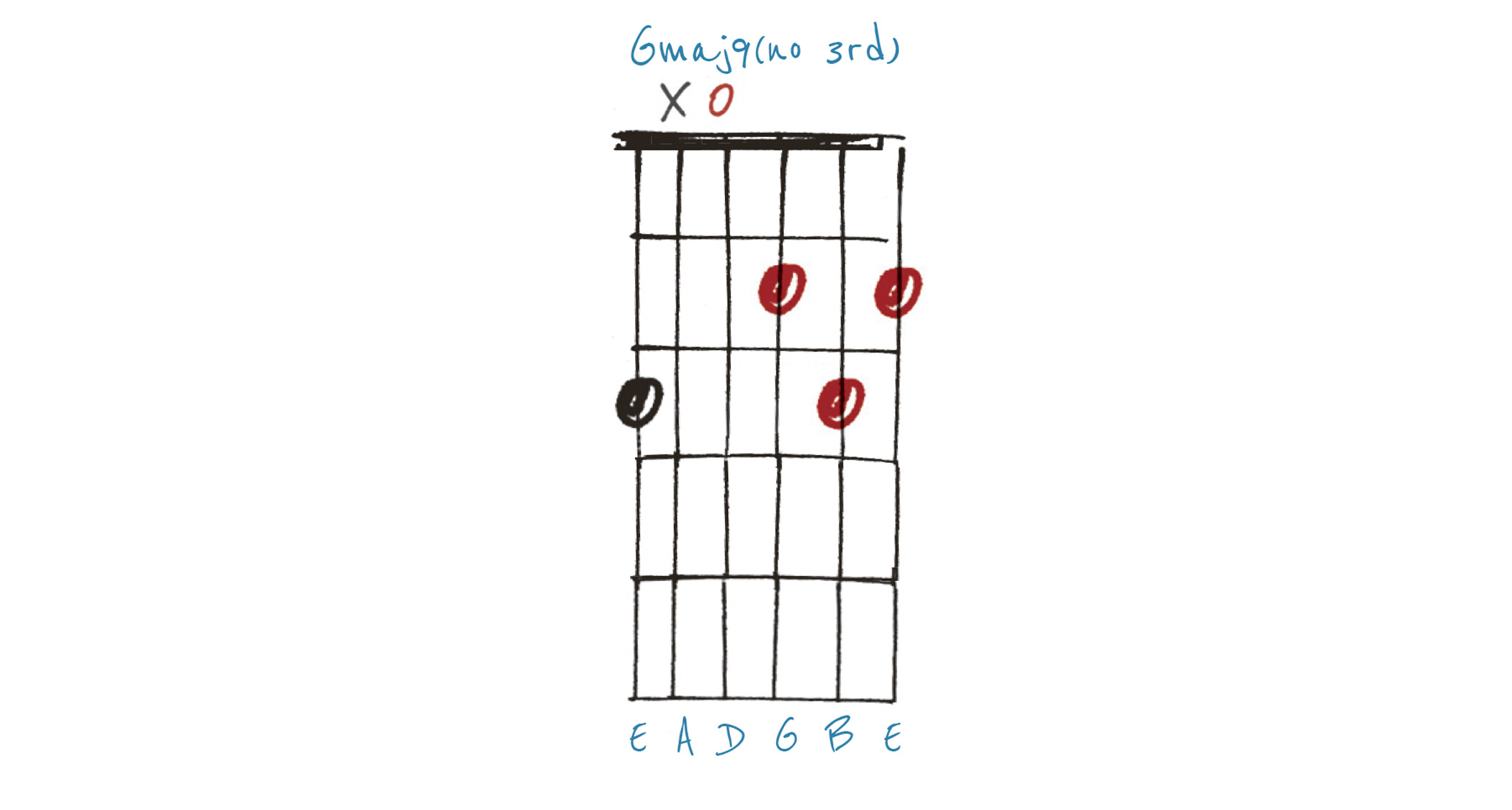
From a player’s perspective, this chord is easy to recognise as D with a G in the bass (D/G), but in practice it sounds more like a Gmaj9 chord with no 3rd (B). With G as our root, we pass the muted fifth string, then the open fourth gives us the 5th of a G chord (D). The third string A gives us a 9th, then another 5th (D) on the second string, and major 7th (F#) on top!
Example 3. Emaj9(no 3rd)/A
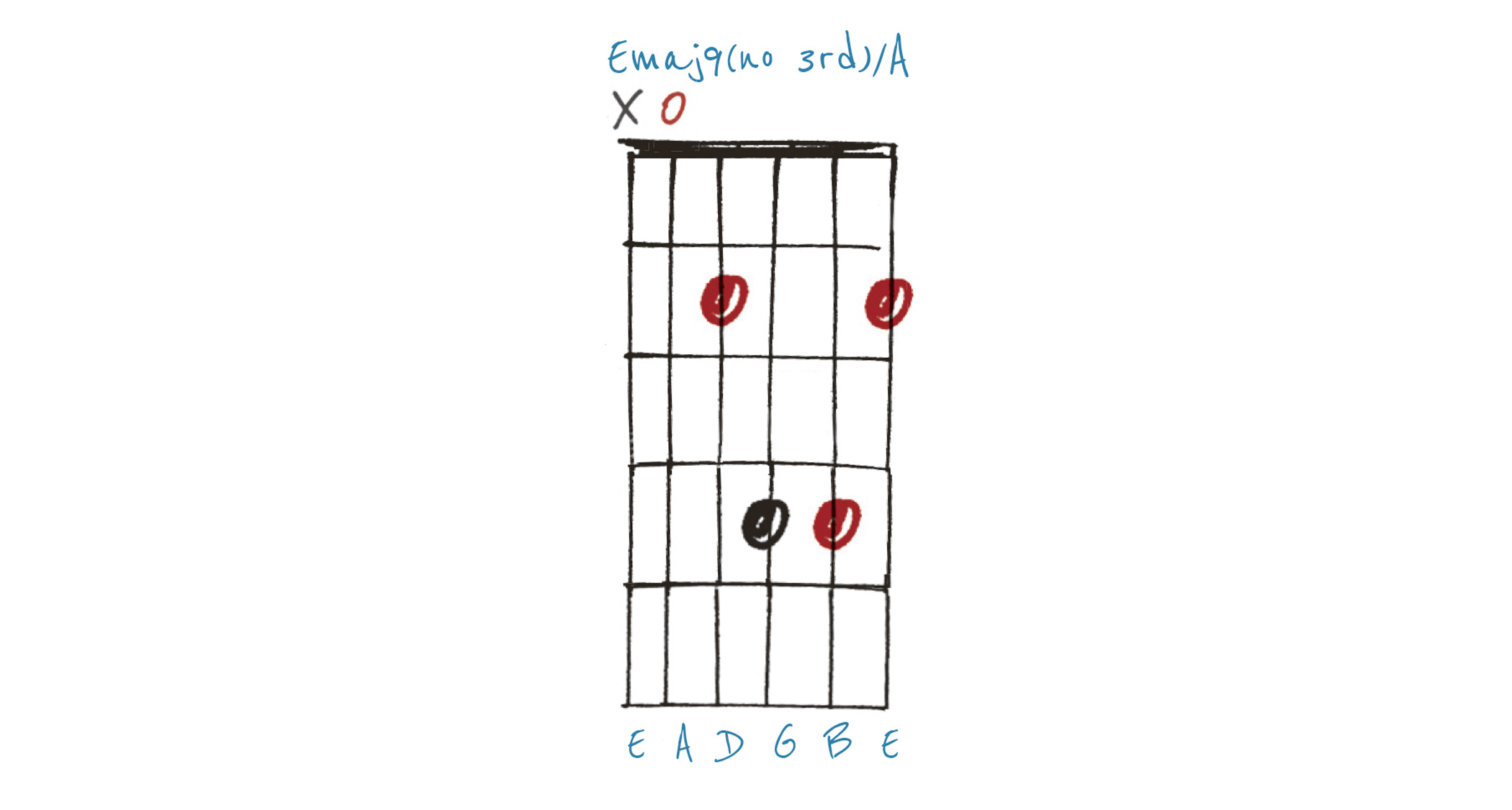
There are several ways you can view this chord. Looking closely, there is a B major triad on the top three strings, with an A5 chord in the bass. After some head-scratching, we felt this is most clearly described as an Emaj9(no3rd)/A, though you might want to try this with, or instead of, an A major chord – it won’t work all the time, but when it does it will be lovely.
Example 4. Bmaj7(no 3rd)
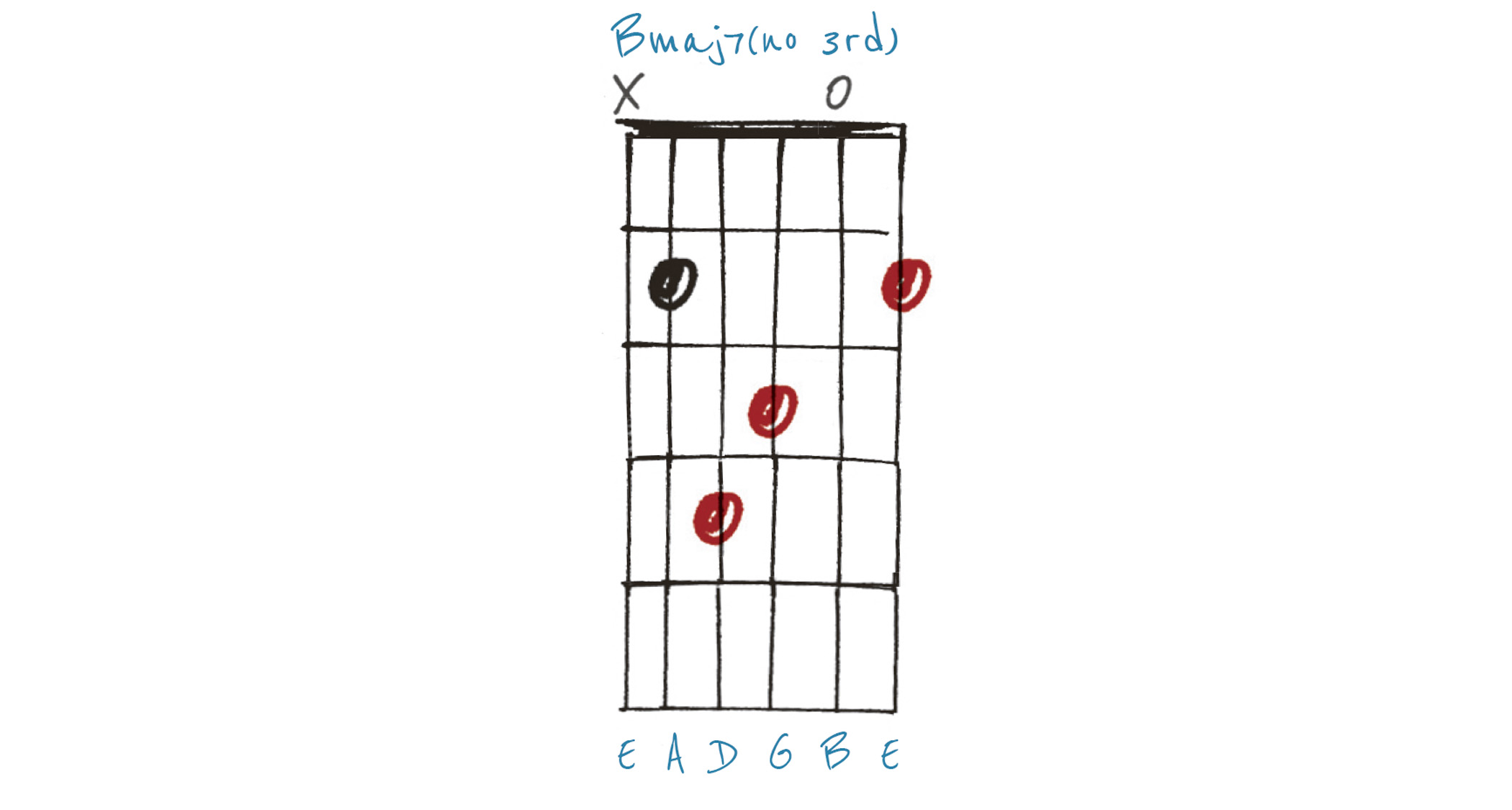
Another chord with the 3rd omitted. This isn’t for any fancy theoretical reason; it’s more about running out of strings/fingers! Many will recognise this as a Bmaj7 but replacing the 3rd (D#) with the open second string (B). This gives a bit of dissonance – just the thing sometimes. Try adding in the open sixth string for a twist on E major.
Example 5. Cadd9addb5
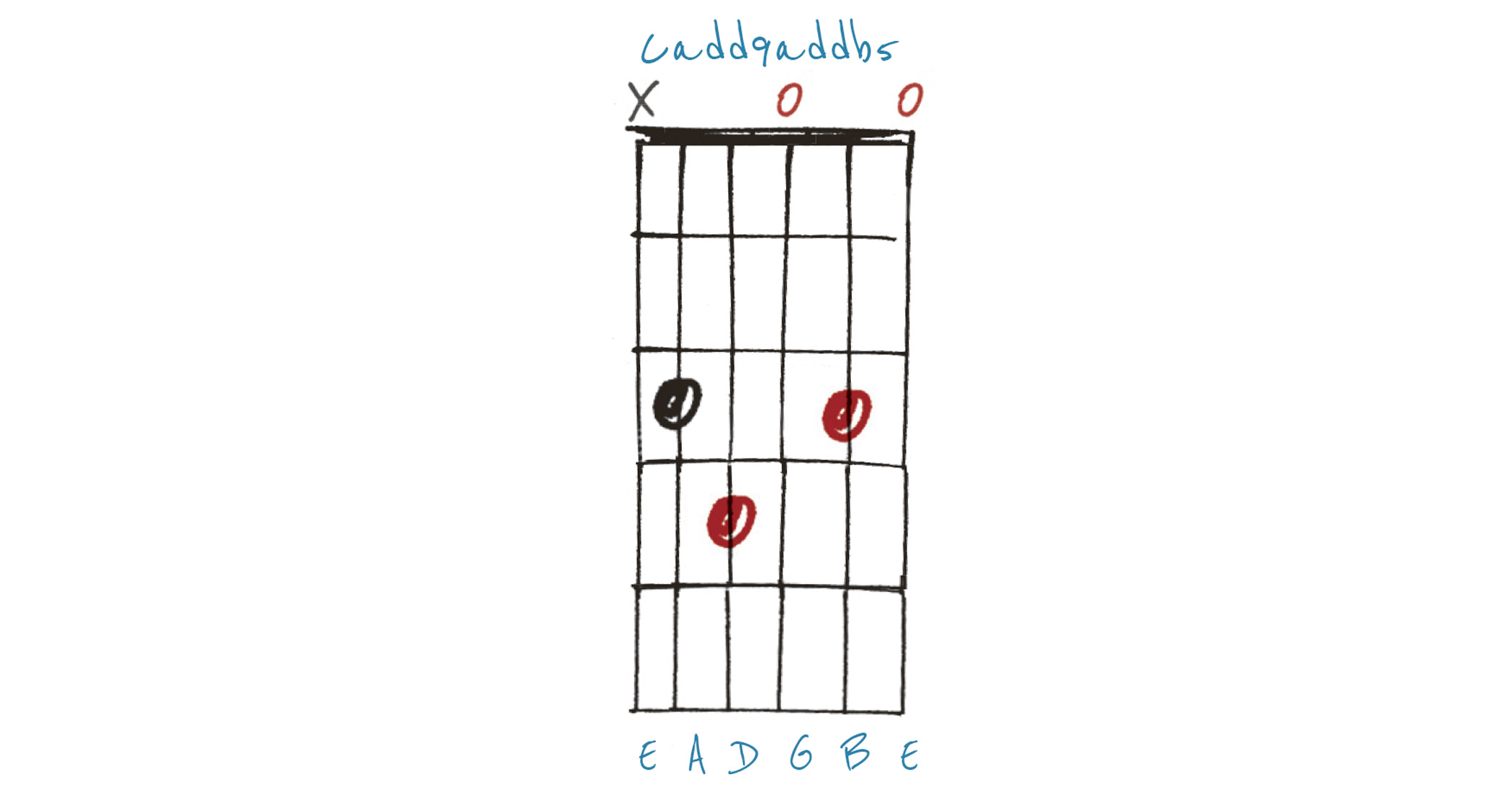
This is definitely based around C major: you can clearly see the triad (C E G) on the fifth, first and third strings respectively. We have the 9th (D) on the second string, so that would mean Cadd9, but then we find a b5 (Gb) on the fourth string. As we already have a 5th on the open third string, we’ll call this an ‘addb5’: Cadd9addb5.
GIPHY App Key not set. Please check settings